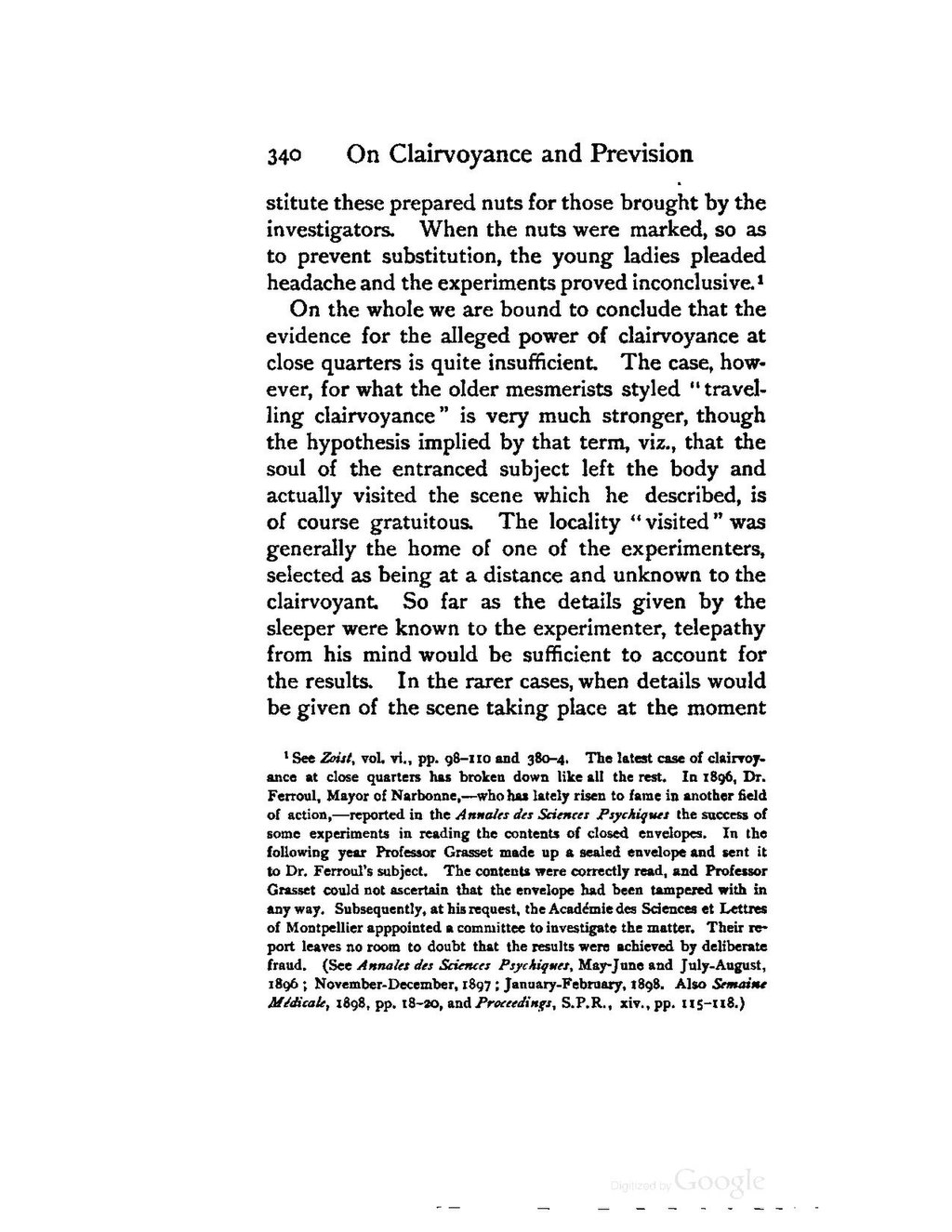stitute these prepared nuts for those brought by the investigators. When the nuts were marked, so as to prevent substitution, the young ladies pleaded headache and the experiments proved inconclusive.[1]
On the whole we are bound to conclude that the evidence for the alleged power of clairvoyance at close quarters is quite insufficient. The case, however, for what the older mesmerists styled "travelling clairvoyance" is very much stronger, though the hypothesis implied by that term, viz., that the soul of the entranced subject left the body and actually visited the scene which he described, is of course gratuitous. The locality "visited" was generally the home of one of the experimenters, selected as being at a distance and unknown to the clairvoyant. So far as the details given by the sleeper were known to the experimenter, telepathy from his mind would be sufficient to account for the results. In the rarer cases, when details would be given of the scene taking place at the moment
- ↑ See Zoist, vol. vi.. pp. 98–110 and 380–4. The latest case of clairvoy. ance at close quarters has broken down like all the rest. In 1896, Dr. Ferroul, Mayor of Narbonne,—who has lately risen to fame in another field of action,—reported in the Annales des Science Physchiques the success of some experiments in reading the contents of closed envelopes. In the following year Professor Grasset made up a sealed envelope and sent it to Dr. Ferroul's subject. The contents were correctly read, and Professor Grasset could not ascertain that the envelope had been tampered with in any way. Subsequently. at his request, the Académie des Sciences et Lettres of Montpellier apppointed a committee to investigate the matter. Their report leaves no room to doubt that the results were achieved by deliberate fraud. (See Annales des Sciences Psychiques, May-June and July-August, 1896; November-December, 1897; January-February, 1898. Also Semaine Médicale, 1898, pp. 18–20, and Proceedings, S.P.R., xiv., pp. 115–118.)
